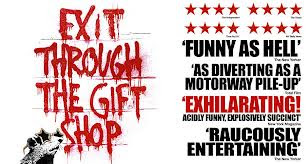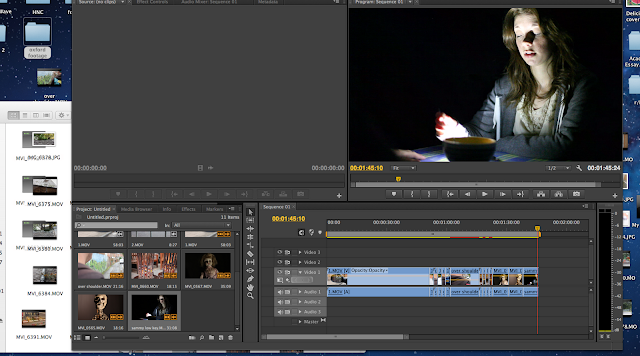Production log
0-5- Opening shot is of Dave who is the artist and
protagonist making a statement on his ideology of graffiti. He will be framed
infront of a graffiti wall in the garden of the Railway Tavern pub. The camera
will be at a low angle only getting his mouth in the shot.
5-10- Stock footage of graffiti on the news (mixture of good
and bad etc Banksy)
Music to be edited with the footage with correct
connotations.
10-15- hand held footage of the protagonist and my self walking to the
location he has decided to paint which should be at Stoney Road. Music starts
(Hip Hop).
15-20- Multiple panning shots of the wall protagonist will
paint on at Stoney Road.
20-25- more footage from interview asking how he started,
framed the same but containing cut aways of his hands or cutaway to a side
shot.
25-30-Interview with some one affected by graffiti, shop
owners etc. Framed behind the counter/bar if a business.
30-35-Close up shot of spray can when artist is starting to
paint. Diegetic sound of spray can rattling and spraying.
35-40- Long shot of protagonist painting. Framed in the
centre of the shot. Music starts (hip hop)
40-45- Interview footage asking if it’s an obsession whilst
cutting away to show his hands again.
45-50-interview footage from some one affected Framed in front
of location or in front of some graffiti if still there.
55-60-Stock footage from news of a graffiti artist that died
on the train tracks. Non diegetic sound of music over the top but so you can
still hear what the news reader is saying.
60-65-back to long shot of protagonist painting. Framed to
the left of the shot so the other graffiti on the wall gets in the shot. Non
diegetic music starts.
65-70-staged or real chase scene located at Stoney Road.
Diegetic sound of running.
70-80-interview with him answering a couple of questions
about does he get scared when he goes out in the middle of the night. Camera
cuts away to side shot.
80-85-close up of protagonists hands with paint on them and different
panning shots and hand help camera movements of graffiti walls located around
Digbeth in Birmingham. Non diegetic sound from music.
85-90-footage of trains going past in a field that’s located
at the bottom of my street (a lot of trains with graffiti on go past). Diegtic
sound of trains going past.
90-95-hand held shot of walking through the field at the
bottom of my street. Non diegetic sound of music.
95-105-interview with victim on if its affected their
business. Framed behind counter/bar.
105-110-stock footage of what’s classed as vandalism
(tagging). Diegetic sound of news reader.
110-115-interview asking why he does it. Cutting away to
over the shoulder shot just getting his mouth in the shout.
115-120-shot of him showing me different pieces he’s done in
various locations. Diegetic sound of him explaining where hes painted.
120-125- ill ask the protagonist if he has ever been caught
or if he’s had any close calls.
125-130-panning shot of the wall as he’s painting it. Non diegetic
music.
130-145- montage of lots of different shots with people
painting graffiti edited at a quick pace with non diegetic sound of the song
souls of mischief -93 til infinity over the top.
145-150-back to interview and asking if theres any political
reason behind what hes doing or if he just enjoys vandalising stuff.
150-160- more close up shots of him spraying the wall at
Stoney Road. All diegetic sound of the can.
160-165-Interview with victim asking them if they find any
part of graffiti as art or whether they see it all as vandalism.
165-180- Another montage but of different pieces of stock
footage that contain victims of graffiti. This is to show two sides of a story
through two montages. Non diegetic music will be used over the top.
180-200- Interview with Katrina, a trainee police officer to
get her opinion on the effects of graffiti and how it could be prevented.
200-205- interview with protagonist asking him if he ever
feels bad for the damage hes caused whilst cutting away to a side shot or close
up of the mouth.
205-210- Non diegetic music starts again with him
painting the wall located at Stoney
Road. Filmed at a low angle.
210-220- Interview with land lady of the railway Tavern pub
getting her opinion of graffiti and the people that do it as a lot of graffiti
artists drink in there. Framed in front of the big graffiti wall.
220-225-panning shot of the graffiti at the Railway Tavern
pub to show how good the artwork looks and how its not just vandalism. Non
diegetic music.
225-235- A time lapse of the protagonist painting from a
long shot whilst on screen graphics show stats taken from Nuneaton council on
how graffiti has risen or fallen in the last so many years. Non diegetic music.
235-240- Final statement from one of the victims of graffiti
to conclude their side of the story. All diegetic sound.
240-245- Final quote from protagonist to get his final say
on the effects of graffiti. All diegetic sound until music starts to get louder
at the end of the film.








































